- Andrew Shires
- Albums and Singles
 As principal early players in the '90s computer music scene, fetishising digital audio and austere CGI graphics with the best of them, it's fitting that Farmers Manual should be behind RLA, the latest and most uncompromising expression so far of the Merzbox mentality. Technically, RLA is a dual layer DVD9, NTSC, region-free DVD with a running time of three days, 21 hours and 38 seconds. It's as exhaustive as possible a collection of everything to do with Farmers Manual's live shows since 1995: nearly four days of MP3s (from "several artists, but mostly FM and related folks") along with accompanying JPEGs of the shows, their locations, gig flyers, stage passes, press reviews, mailing list write-ups, and even a few movie files. The icing on the cake is that, inserted in a computer's DVD drive, it auto-plays some baffling and unexplained handheld camcorder footage of FM knocking a wall down in a basement studio, then later hanging around in an apartment with a cat.
As principal early players in the '90s computer music scene, fetishising digital audio and austere CGI graphics with the best of them, it's fitting that Farmers Manual should be behind RLA, the latest and most uncompromising expression so far of the Merzbox mentality. Technically, RLA is a dual layer DVD9, NTSC, region-free DVD with a running time of three days, 21 hours and 38 seconds. It's as exhaustive as possible a collection of everything to do with Farmers Manual's live shows since 1995: nearly four days of MP3s (from "several artists, but mostly FM and related folks") along with accompanying JPEGs of the shows, their locations, gig flyers, stage passes, press reviews, mailing list write-ups, and even a few movie files. The icing on the cake is that, inserted in a computer's DVD drive, it auto-plays some baffling and unexplained handheld camcorder footage of FM knocking a wall down in a basement studio, then later hanging around in an apartment with a cat.
Mego
The MP3s on RLA (the abbreviation stands for "recent live archive") were created from whatever sources FM could find, so the sound quality varies, and some recordings are incomplete. But this is part of the collection's charm, and with around 150 MP3s on the disc, you can forgive the occasional imperfection.
With FM being a largely improvisational group, RLA doesn't feature the same music again and again: each collaboratively improvised performance is sonically and to some extent structurally unique. Though their sound has much in common with the noise-influenced digital crunch producers who followed them, their source material and influences are often broader. Their music is more straight-faced surrealism than aleatoric(¬π) violence.
It's impossible to review this release without fixating on the format, but in the packaging-obssessed world of MEGO, that doesn't seem inappropriate. Obviously, being a DVD, and a data DVD at that, RLA is only usable if you have a computer DVD drive, and not a domestic DVD player. But the entire project is available for free download from FM's web site, and new recordings have been added to the site over time (currently around 10 more hours' worth). And if you don't have a decent net connection, or any at all (in which case where are you reading this?), you can legally obtain the music under a "copyleft"-style license, meaning that at least in principle you can ask someone to make you conventional data CDs of the approximately 8GB of data here. I suppose you'd have to ask them very nicely.
RLA is more of an ongoing project than a single artefact. It's an essential resource for existing fans, and as good a place as any for newcomers to learn about this most unique of laptop supergroups. I still haven't finished exploring it. 
sounds:
Read More
- Administrator
- Albums and Singles
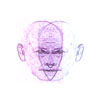 For an album that is right at forty-six minutes long, it sure does seemto last an enternity. The entire record is basically a series of tonesaccompanied by various passages concerned with or describing sexualperversions. At first this seemed like an exciting enough prospect:Andrew Liles associates Aural Anagramwith the various productions of Hans Bellmer. Bellmer was one of thefirst post-Dada surrealists, his self-portrait appears on the cover andI assume that the artwork in the liner notes is either inspired ordrawn by him. The primary sketch on the liner notes depicts a nudewoman on her hands and knees with her lower torso "x-rayed" to revealher womb and sexual organs. At the same time, she is pleasuring threedifferent men who are shown only by the presence of their penis. It's astrange image to be sure, but none of the sexuality in the picturemakes it into the music in any way. Each track sounds remarkably thesame with various vocal samples describing various perversities orsexual observations made from a nearly medical standpoint. Nothingchanges throughout the duration of the recording: many of the tonesused have the same color and feel throughout and much of the vocalsamples simply repeat themselves into boring oblivion. It sounds morelike one long recording than a series of nine compositions inspired byan explicit artist. It may be my hormones talking, but with a premisslike this, the album certainly could've been more exciting and retainedits rather dark and ominous atmosphere. In the end, that is what makeseverything about this recording so dull: it's too dark for too long andwith little to no variation in the bleakness of it all. It's aninteresting exploration of an artist and an idea but it fails as acomposition as a result of being far too limited in scope.
For an album that is right at forty-six minutes long, it sure does seemto last an enternity. The entire record is basically a series of tonesaccompanied by various passages concerned with or describing sexualperversions. At first this seemed like an exciting enough prospect:Andrew Liles associates Aural Anagramwith the various productions of Hans Bellmer. Bellmer was one of thefirst post-Dada surrealists, his self-portrait appears on the cover andI assume that the artwork in the liner notes is either inspired ordrawn by him. The primary sketch on the liner notes depicts a nudewoman on her hands and knees with her lower torso "x-rayed" to revealher womb and sexual organs. At the same time, she is pleasuring threedifferent men who are shown only by the presence of their penis. It's astrange image to be sure, but none of the sexuality in the picturemakes it into the music in any way. Each track sounds remarkably thesame with various vocal samples describing various perversities orsexual observations made from a nearly medical standpoint. Nothingchanges throughout the duration of the recording: many of the tonesused have the same color and feel throughout and much of the vocalsamples simply repeat themselves into boring oblivion. It sounds morelike one long recording than a series of nine compositions inspired byan explicit artist. It may be my hormones talking, but with a premisslike this, the album certainly could've been more exciting and retainedits rather dark and ominous atmosphere. In the end, that is what makeseverything about this recording so dull: it's too dark for too long andwith little to no variation in the bleakness of it all. It's aninteresting exploration of an artist and an idea but it fails as acomposition as a result of being far too limited in scope. samples:
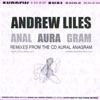 On the other hand, the remix album included with the first one-hundred copies of Aural Anagramis a more cohesive, varied, and interesting exploration of droningsounds and sexual expression. Instead of being a series of nine trackslike the original was, Anal Aura Gram is four tracks tiedtogether very closely so that the recording can be experienced as awhole. By cutting the album down by ten minutes and condensing much ofthe original material, Liles creates an almost deafening world. Itisn't deafening because it's overly loud or overpowering in any way,it's just that the sounds used produce the aural equivalent ofclaustrophobia. Every sound has a tactitle quality, whether it isfeathery softness or the cold feeling of making a discomfortingobservation. More melodic elements are present than on the original andnot so much time is devoted to near-silence or frustrating repetition.The vocal samples are used more sparingly and multiple textures areused throughout so that nothing overstays its welcome. This sort ofattention to detail adds to the eerie and dire feelings that wereattempted on the original mix: various melodic tones float like bubblesand are flourished by rolling sparkles in piano-like ascents anddescents. Small buzz-saws cut away quietly in the background whileother alien sounds stutter and chop their away across the soundspectrum. Here and there feminine moans and abrupt cries appear anddisappear within the mix creating a vaguely erotic tension whilemaintaining a secretive tone that hints at violence, destruction, and(somehow) infidelity. There are fewer overtly sexual references made,but the ones used are both exciting and unsettling. The remixes areeverything Aural Anagram could've (and should've) been, so those interested should grab a copy before they all disappear.
On the other hand, the remix album included with the first one-hundred copies of Aural Anagramis a more cohesive, varied, and interesting exploration of droningsounds and sexual expression. Instead of being a series of nine trackslike the original was, Anal Aura Gram is four tracks tiedtogether very closely so that the recording can be experienced as awhole. By cutting the album down by ten minutes and condensing much ofthe original material, Liles creates an almost deafening world. Itisn't deafening because it's overly loud or overpowering in any way,it's just that the sounds used produce the aural equivalent ofclaustrophobia. Every sound has a tactitle quality, whether it isfeathery softness or the cold feeling of making a discomfortingobservation. More melodic elements are present than on the original andnot so much time is devoted to near-silence or frustrating repetition.The vocal samples are used more sparingly and multiple textures areused throughout so that nothing overstays its welcome. This sort ofattention to detail adds to the eerie and dire feelings that wereattempted on the original mix: various melodic tones float like bubblesand are flourished by rolling sparkles in piano-like ascents anddescents. Small buzz-saws cut away quietly in the background whileother alien sounds stutter and chop their away across the soundspectrum. Here and there feminine moans and abrupt cries appear anddisappear within the mix creating a vaguely erotic tension whilemaintaining a secretive tone that hints at violence, destruction, and(somehow) infidelity. There are fewer overtly sexual references made,but the ones used are both exciting and unsettling. The remixes areeverything Aural Anagram could've (and should've) been, so those interested should grab a copy before they all disappear.samples:
Read More
- Administrator
- Albums and Singles
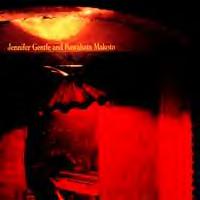 Jennifer Gentle's newest release is a live disc documenting a 2002 show in their native Italy during which they were joined on stage by the irrepressible Kawabata Makoto of Acid Mothers Temple. I'm not sure what, if anything, Makoto's monolithic acid-guitar stylings have in common with Jennifer Gentle's eclectic psych-pop. Perhaps nothing, but once the opening drones begin all such questions melt away.Sillyboy
Jennifer Gentle's newest release is a live disc documenting a 2002 show in their native Italy during which they were joined on stage by the irrepressible Kawabata Makoto of Acid Mothers Temple. I'm not sure what, if anything, Makoto's monolithic acid-guitar stylings have in common with Jennifer Gentle's eclectic psych-pop. Perhaps nothing, but once the opening drones begin all such questions melt away.Sillyboy
This disc is far better than any of Jennifer Gentle's albums, a stunning performance that left me wondering why they haven't applied some of the musical tactics on display here to their studio output. Kawabata Makoto joined Jennifer Gentle on stage without any rehearsal and with no previous knowledge of the band's songs. He simply invents impromptu solos on his electric guitar, weaving in and out of the long-form improvisations of Marco Fasolo and company. The first track is a nearly 15-minute extended jam on the song "Bring Them", which was perhaps the only worthwhile song on Jennifer Gentle's debut album I Am You Are. The repetitive guitar and organ melodies compete with Makoto's acid-fried soloing and cyclical feedback, building to a massive explosion of cosmic rock n' roll nirvana. Jennifer Gentle should consider recording these lengthy, improvised jams in the studio, rather than the three-minute song fragments that fill their first two albums. Track two is a five-minute solo by Kawabata Makoto entitled "Man From Mu", basically an extended improvisation on the sarongi. The AMT ringleader pulls some beautifully unhinged sounds from the strange, stringed instrument. Track three is another extended jam, this time from Jennifer Gentle's Funny Creatures Lane album, "Couple in Bed by a Green Flashing Light". It's a stone groove, a terrific freakout that utilizes the full potential of the players and ascends to some serious third-eye territory. Although The Wrong Cage is very short at only about 30 minutes, it fills out its entire length with some delicious ear candy. I would highly recommend that fans of Acid Mothers Temple waste no time in seeking it out. Having never seen Jennifer Gentle live, it's hard to say whether this is a typical performance for the band. But I can definitely recommend that they waste no time in trying to harness some of their ecstatic live energy onto their next studio recording.
Read More
- Administrator
- Albums and Singles
 Italian music listeners seem to have an enduring interest in rare psychedelic, progressive and kosmische music from the late 60's and 70's. There is a clutch of Italian labels like Akarma, Comet and Horizon that tirelessly pump out deluxe reissues of obscure chestnuts from America and Europe's recent rock past. Not surprisingly, a number of new groups have come out of Italy in the last few years that owe a tremendous debt to this tradition of psychedelic esoterica.
Italian music listeners seem to have an enduring interest in rare psychedelic, progressive and kosmische music from the late 60's and 70's. There is a clutch of Italian labels like Akarma, Comet and Horizon that tirelessly pump out deluxe reissues of obscure chestnuts from America and Europe's recent rock past. Not surprisingly, a number of new groups have come out of Italy in the last few years that owe a tremendous debt to this tradition of psychedelic esoterica.
Lexicon Devil
Jennifer Gentle are a four-piece, fronted by a head named Marco Fasolo, who writes all of the music and lyrics. Jennifer Gentle's sound shows an obvious fascination with bands like The Residents, Captain Beefheart, as well as lesser-known progressive acts like the Third Ear Band and The Edgar Broughton Band. I like to imagine that Fasolo owns the entire back catalog of Harvest Records. Predictably, the music is very derivative of these musical fetishes, but that doesn't necessarily make it completely worthless. Jennifer Gentle have personalized their influences and arrived at a somewhat unique freaked-out combination of cartoon noises, toy percussion, Neanderthal guitar solos and inarticulately screamed lead vocals. Ectoplasmic Garden Party is a two-disc set collecting Jennifer Gentle's first two full-length albums - released separately as I Am You Are and Funny Creatures Lane. The first disc is weak. A series of questionable stylistic exercises, I Am You Are is the sound of a band trying to find their footing, and failing to coalesce. On the opening track "Sound-Check", the band launches into a loping, primitive rhythm section with stupid guitar licks and distorted helium vocals, sounding like The Chipmunks covering a Shaggs song. While it's funny at first, it soon becomes obvious that The Residents did this nearly 30 years ago with more interesting results on albums like Third Reich and Roll. The only salvageable song on the first disc is "Bring Them", a dark, trance-inducing riff reminiscent of The Velvet Underground's "Sister Ray". The riff keeps cycling around as Jennifer Gentle add layers of fuzzy, hypnotic melodies, guitar feedback and drone. After this track, though, the band makes a sudden, inexplicable left turn into Incredible String Band territory, trying their hand at a couple of psychedelic folk ballads with male-female "call and response" vocals. This is a bad idea, as the lyrics are mostly inaudible, and the whole thing stinks of a bunch of unbathed longhairs, sitting by the campfire on acid, trying to channel Pentangle with an out-of-tune guitar. The second disc, Funny Creatures Lane shows exponential improvement over the first album. The band has learned to play their instruments a little better, and the production is more polished. Jennifer Gentle have also narrowed their musical focus, and are able to deliver a set of twelve twisted psych-pop songs that are redolent of something out of a dimly remembered past. Their new emphasis on the "pop" in psych-pop brings with it an increased interest in singsong-y vocals and bright, catchy melodies, not unlike The Electric Prunes' first two albums of paisley garage-pop. These songs are enhanced by Jennifer Gentle's odd instrumentation, purposely low-fi production and insistence on perversely mutated cartoon-character vocals. They have also chosen better musical ideas to imitate this time, with interludes that randomly and deliriously quote (or steal) from classic krautrock, garage rock and progressive. They also frequently reference Ennio Morricone and Goblin, with their dense, experimental soundtracks to the horror, spaghetti western and trash films that have played a significant role in Italy's artistic heritage. While none of the songs on Funny Creatures Lane stand out from the rest, the album is a consistently engaging trip through the weird record collections of four crazed Italian hippies. 
Read More
- Administrator
- Albums and Singles
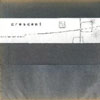 Comprised of members of both Movietone and Flying Saucer Attack,Crescent was born of the spacy post-rock scene that arose from Bristolin the mid-1990s. Vastly less interesting than either of those bands,Crescent has released a small handful of recordings since itsinception. Their latest, and first for Fat Cat, recalls the playfulorgan melodies and percussion of Pram; the slightly trippy, moody brassinflections of Legendary Pink Dots; and the mournful, jarring vocals ofJoy Division. This may sound like a great formula, but somehow Crescentjust doesn't pull it off. Overall, the raw, rough sound of By the Roads and the Fieldsmakes for a thought-provoking atmosphere, but ultimately does notcontribute anything to make the album compelling. The vocals of MattJones in particular tend to drag the music down. His monotone, sullenpresentation of the ponderous lyrics makes them far too heavy for thealbum's strong point, the sparse instrumentation. "Mica," the besttrack, seems to be so largely due to the fact that it doesn't havevocals on it. Devotees of Flying Saucer Attack and the subsequentprojects it spawned would be wise to wait for this fall's forthcomingMovietone record rather than pick up Crescent's latest offering.
Comprised of members of both Movietone and Flying Saucer Attack,Crescent was born of the spacy post-rock scene that arose from Bristolin the mid-1990s. Vastly less interesting than either of those bands,Crescent has released a small handful of recordings since itsinception. Their latest, and first for Fat Cat, recalls the playfulorgan melodies and percussion of Pram; the slightly trippy, moody brassinflections of Legendary Pink Dots; and the mournful, jarring vocals ofJoy Division. This may sound like a great formula, but somehow Crescentjust doesn't pull it off. Overall, the raw, rough sound of By the Roads and the Fieldsmakes for a thought-provoking atmosphere, but ultimately does notcontribute anything to make the album compelling. The vocals of MattJones in particular tend to drag the music down. His monotone, sullenpresentation of the ponderous lyrics makes them far too heavy for thealbum's strong point, the sparse instrumentation. "Mica," the besttrack, seems to be so largely due to the fact that it doesn't havevocals on it. Devotees of Flying Saucer Attack and the subsequentprojects it spawned would be wise to wait for this fall's forthcomingMovietone record rather than pick up Crescent's latest offering.Read More
- Administrator
- Albums and Singles
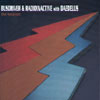 Asthe Weather, Los Angeles MCs Busdriver and Radioinactive dispense quickcut, weaving and rapid-fire rhymes with free-association styled contentranging from humorous to brilliant. Along with sample-basedcompositions and production from studio ace Daedelus, the trio havecollaborated on The Weather for sixty minutes of blisteringrhymes and hip hop meets clever musical arrangements, wierdness andsatire. "Pen's Oil" opens with a 18's inspired orchestration set tofunky drums and laid-back piano riffing that shifts to double time tokeep up with the speedy vocal dispatching. The playfully titled "CarlWeathers" consists of a full backing that includes machine beats,percussion and upright bass with a chorus that sings a line from atypical weather report while the duo convey simultaneous rhymes andbreak away for individual segments. A sampled audience clapping outsyncopated rhythms sets "Fine For A Robot" in motion for a soulfultrack when Busdriver, tongue in cheek, beautifully sings a loving odeto a machine. It then switches to drums and piano flourishes whenRadioinactive gets the sassy rhymes going for the robot girl. Daedelus'production on "Raffle Ticket Blues" employs dark, minor key jazz piano,bass and brushed drums segments with tinny machine beats forRadioinactive's wordplay in which the piece's sections are clearlymarked off based on the words per minute. The Weather's interestinglyrics and vocal talents of leaving no space unfilled are equallymatched by their ability to let lines breathe by leaving space betweenwords; all complemented nicely by Daedelus' rhythmic soundmanipulation.
Asthe Weather, Los Angeles MCs Busdriver and Radioinactive dispense quickcut, weaving and rapid-fire rhymes with free-association styled contentranging from humorous to brilliant. Along with sample-basedcompositions and production from studio ace Daedelus, the trio havecollaborated on The Weather for sixty minutes of blisteringrhymes and hip hop meets clever musical arrangements, wierdness andsatire. "Pen's Oil" opens with a 18's inspired orchestration set tofunky drums and laid-back piano riffing that shifts to double time tokeep up with the speedy vocal dispatching. The playfully titled "CarlWeathers" consists of a full backing that includes machine beats,percussion and upright bass with a chorus that sings a line from atypical weather report while the duo convey simultaneous rhymes andbreak away for individual segments. A sampled audience clapping outsyncopated rhythms sets "Fine For A Robot" in motion for a soulfultrack when Busdriver, tongue in cheek, beautifully sings a loving odeto a machine. It then switches to drums and piano flourishes whenRadioinactive gets the sassy rhymes going for the robot girl. Daedelus'production on "Raffle Ticket Blues" employs dark, minor key jazz piano,bass and brushed drums segments with tinny machine beats forRadioinactive's wordplay in which the piece's sections are clearlymarked off based on the words per minute. The Weather's interestinglyrics and vocal talents of leaving no space unfilled are equallymatched by their ability to let lines breathe by leaving space betweenwords; all complemented nicely by Daedelus' rhythmic soundmanipulation. Read More
- Administrator
- Albums and Singles
 Journalists invent music sub-genres when they get tired of comparingmusical artists to another musical act. While Icelander OlafurJosephsson is once again showcasing his amazing playing, arrangement,and compositional talents for his second full-length disc as StafrænHákon, it's painfully difficult to escape the comparisons to Mogwai.(In addition, it's rather ironic than Josephsson now makes Glasgow hishome.) All of his music is instrumental once again on this, his firstrelease to be put out through somebody other than himself. For tensongs, the guitar and effects-driven melodies are a blissful wash ofdrifting audio landscapes. It's quite easy to get completely lost inthe music's beauty. Numerous songs like "Tætir rækju" pulse with asubtle beat and move within somewhat predictable, and enjoyable whilebeat-less tunes like "Grifflur" are chilling and turbulent like thebright moonlight reflecting off of cold, icy waters. With the additionof organic drum work and chiming sounds, however, songs like the closer"Safi" are unmistakably resemblant of Mogwai's tunes from their EP +release. There's nothing unpleasant about any of the songs, but what'slacking perhaps is an element of the unexpected, the unpredictabile, orchaos. There's so much that can be done with this music, but Josephssonchooses a route which leaves most of the music completely as is. Whileit may reduce the chances of being accused of being gimmicky, it doessound derivative. Skvettir Edik à Ref is a good second albumand will surely please a ton of fans of the more gentle side ofinstrumental guitar music. There is a load of potential for StefrænHákon to be amazing but it's just not quite at that level yet.
Journalists invent music sub-genres when they get tired of comparingmusical artists to another musical act. While Icelander OlafurJosephsson is once again showcasing his amazing playing, arrangement,and compositional talents for his second full-length disc as StafrænHákon, it's painfully difficult to escape the comparisons to Mogwai.(In addition, it's rather ironic than Josephsson now makes Glasgow hishome.) All of his music is instrumental once again on this, his firstrelease to be put out through somebody other than himself. For tensongs, the guitar and effects-driven melodies are a blissful wash ofdrifting audio landscapes. It's quite easy to get completely lost inthe music's beauty. Numerous songs like "Tætir rækju" pulse with asubtle beat and move within somewhat predictable, and enjoyable whilebeat-less tunes like "Grifflur" are chilling and turbulent like thebright moonlight reflecting off of cold, icy waters. With the additionof organic drum work and chiming sounds, however, songs like the closer"Safi" are unmistakably resemblant of Mogwai's tunes from their EP +release. There's nothing unpleasant about any of the songs, but what'slacking perhaps is an element of the unexpected, the unpredictabile, orchaos. There's so much that can be done with this music, but Josephssonchooses a route which leaves most of the music completely as is. Whileit may reduce the chances of being accused of being gimmicky, it doessound derivative. Skvettir Edik à Ref is a good second albumand will surely please a ton of fans of the more gentle side ofinstrumental guitar music. There is a load of potential for StefrænHákon to be amazing but it's just not quite at that level yet. Read More
- Administrator
- Albums and Singles
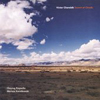 Combining cultural (i.e., traditional) instrumentation and phrasingwith more contemporary music always ends up producing something far toonew age and cheesey. It's a shame, especially when left as seperateentities, each can be quite gorgeous and ear-opening. Victor Chorobikand company have attempted to fuse various Tibetan sounds with those ofjazz and classical descent. The results are, at best, mixed andself-limiting. Exotic flutes are mixed with soprano and tenorsaxophones and each makes the other stand out like a sore thumb: thetwo simply don't fuse as well as the musicians would like to think.Lengthy tracks are accompanied by endlessly repeating drum patternswhile easy-going and laid back melodies shine over them, only themelodies aren't all that exciting or attention-grabbing. When thetraditional instrumentation and structures are left to themselves theresults are a little different. Chants, spoken-word passages, woodenflutes, and various guitars all mix to form something that borders onthe spiritual; they at least sound as if they are of a religiousbackground. Repeated listens will reveal that the native instrumentsare never truly left alone, however. There's always a keyboard of somekind attempting to add to the mystery and awe that native (or justplain alien) music, when completely naked, so often has the power ofevoking. The result is a pure stinking cheese that sucks the life outof the source material. This is nowhere more evident than on "Mantra ofGuru Rinpoche." A lone chant is performed only to be interrupted by acompletely pointless combination of shimmering keyboard sounds and lowbass throbbings. I've never been a big fan of these kinds of culturalcrossings precisely because they rob the uniqueness out of eachother.That's not to say that every single one of them are doomed to failure,but hearing the original stuff as documented in the field always endsup inspiring me more than what is meticulously calculated andconsidered within the studio. There is some beauty to be found here,but be prepared to be offended along the way. -
Combining cultural (i.e., traditional) instrumentation and phrasingwith more contemporary music always ends up producing something far toonew age and cheesey. It's a shame, especially when left as seperateentities, each can be quite gorgeous and ear-opening. Victor Chorobikand company have attempted to fuse various Tibetan sounds with those ofjazz and classical descent. The results are, at best, mixed andself-limiting. Exotic flutes are mixed with soprano and tenorsaxophones and each makes the other stand out like a sore thumb: thetwo simply don't fuse as well as the musicians would like to think.Lengthy tracks are accompanied by endlessly repeating drum patternswhile easy-going and laid back melodies shine over them, only themelodies aren't all that exciting or attention-grabbing. When thetraditional instrumentation and structures are left to themselves theresults are a little different. Chants, spoken-word passages, woodenflutes, and various guitars all mix to form something that borders onthe spiritual; they at least sound as if they are of a religiousbackground. Repeated listens will reveal that the native instrumentsare never truly left alone, however. There's always a keyboard of somekind attempting to add to the mystery and awe that native (or justplain alien) music, when completely naked, so often has the power ofevoking. The result is a pure stinking cheese that sucks the life outof the source material. This is nowhere more evident than on "Mantra ofGuru Rinpoche." A lone chant is performed only to be interrupted by acompletely pointless combination of shimmering keyboard sounds and lowbass throbbings. I've never been a big fan of these kinds of culturalcrossings precisely because they rob the uniqueness out of eachother.That's not to say that every single one of them are doomed to failure,but hearing the original stuff as documented in the field always endsup inspiring me more than what is meticulously calculated andconsidered within the studio. There is some beauty to be found here,but be prepared to be offended along the way. - Read More
- Administrator
- Albums and Singles
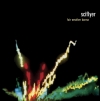 It used to be that when a band was called shoegazer music it was descriptive enough to illustrate exactly what someone would hear when they put the album on. These days, there are so many bands recording music that passes as shoegazer that it's almost evolved into another genre entirely, and none of it really resembles the original sound. Unfortunately, most of the bands in this genre possess little originality and more than their fair share of mediocrity. Sciflyer, hot off two self-released EPs, prove on their debut that there is still a chance for this kind of music while also displaying everything that's wrong with the psychedelic rock scene.
It used to be that when a band was called shoegazer music it was descriptive enough to illustrate exactly what someone would hear when they put the album on. These days, there are so many bands recording music that passes as shoegazer that it's almost evolved into another genre entirely, and none of it really resembles the original sound. Unfortunately, most of the bands in this genre possess little originality and more than their fair share of mediocrity. Sciflyer, hot off two self-released EPs, prove on their debut that there is still a chance for this kind of music while also displaying everything that's wrong with the psychedelic rock scene.
 
Their formula and ingredients are exactly the same as many other bands: record on vintage equipment with phaser effects and lots of delay, then fade the vocals in the mix so they're almost unintelligible. Voices are only there as a hook, to draw the listener in and make them listen to the music more in an effort to decipher the words. What seems like a good idea doesn't work as a tool to hold interest, though, just as it doesn't work from an aesthetic level. Beyond that, however, Sciflyer is passing fair, with enough of a gift for melody to see some of the tracks through. Here and there are songs that sound like modern surf guitar, where elsewhere there's a heavy Cure or Smiths influence feeding through the bass and vocals. There also seems to be a preoccupation with fire and self-immolation, with two songs having "burn" in the title, and another featuring the lyric "we'll blow ourselves apart." Sadly, the chord structure is repetitive all over the place, with the same old guitar line looping again and again. "Like an Ion" is the worst offender in this area, with no real chorus or verse to speak of, just one part repeated into oblivion. Immediately following it on the album is "Alpha Centauri," easily the best track, but it's too short to make much of a difference. That's just the problem with most of these bands: a lot of the same echoed mess but a few moments of brilliance. If Sciflyer can make a whole record like the two-minute glory of "Alpha Centauri" we might be getting somewhere. Until then, the boredom will continue. 
Read More
- Michael Patrick Brady
- Albums and Singles
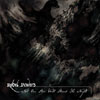 In the office where I worked this summer, the main lobby featured anenormous piece by artist Frank Stella. The piece was large, probablytwenty feet tall, and consisted of a series of colored boxes, enclosedin a thick orange boarded and symmetrically mirrored on the oppositeside. These are the kind of works, abstract shapes and colors, thatmade Stella and his minimalist style known in the art world. Everymorning I would step off the elevators and be cast in the imaginaryshadow of this walled piece, unable to ignore it, and think to myself,"Is it me, or is this a total fraud?" I'm no art critic, but for me thepiece did nothing. It evoked no feelings and no deep thoughts, only theconfusion that a crayola palette and attention to straight lines couldto some extent, make one renowned. So excuse me for being somewhat warywhen Rebel Powers was described to me as minimalist. Rebel Powers is acollaboration between Acid Mothers Temple's Kawabata Makoto, CottonCasino, Koizumi Hajime and Telstar Ponies' David Keenan. Thesemusicians came together to perform two long instrumental tracks, withonly incidental overdubbing to create what they identify as minimalistexcursions. "We Are For the Dark" is the first volley, and quicklydispelled my initial fears. Guitars drone against each other as ghastlymoans supplied by a sarangi, a classical Indian bowed instrument.Percussion drips in and out of the shambling piece as it oozes forward.The darkness Rebel Powers aims to provide is very apparent, and "We AreFor the Dark" lays out in its patient tones a spooky, malevolentatmosphere that only builds in intensty and effectiveness as the trackcontinues. The instruments seem to grind against one another like therusty components of a machine lurching to life and slowly gaining backits momentum and force. Errant shards of noise shoot out into the stewbefore disappearing beneath it. In the tail end of its long duration,the improvisation reaches a more insistent peak before petering out ina collision of clangs and dwindling washes. The track is not spare orsparse, and never does it feel overly repetitive (though in essence ittreads the same core for twenty five minutes) or boring. It has a depthand body that draws you in and wraps you up in the imagery; it doesn'tleave you staring at it confounded. Unfortunately, the next track isnot nearly as successful. "Our God is A Mighty Fortress" mills aboutaimlessly over a repetitive pattern for far too long. While the firsttrack transported me to dark forests, rain soaked dirt roads andlurking unknowns in the brush just behind, the second track brings meright back to my office, staring up at the Stella and wondering tomyself what the big deal is. As the track progresses, it does improveslightly, with a more clean, more relaxed attitude than the first, butthe loss of energy and excitement that the first ten minutes or so is adevastating hit to the whole. Had the tracks been reversed in order, Imay have been more forgiving, but the ideas as presented took the windout of my enthusiasm. Such is the risk with improvised music. Sometimesideas don't pan out and paths taken more often lead to dead ends thanexplosions of brilliance, but when they do the trip is entirely worthit. As demonstrated by Rebel Powers, minimalism can mean more thaneconomy, and bleak can be busy, but that asceticism is a trap that isdifficult to escape.
In the office where I worked this summer, the main lobby featured anenormous piece by artist Frank Stella. The piece was large, probablytwenty feet tall, and consisted of a series of colored boxes, enclosedin a thick orange boarded and symmetrically mirrored on the oppositeside. These are the kind of works, abstract shapes and colors, thatmade Stella and his minimalist style known in the art world. Everymorning I would step off the elevators and be cast in the imaginaryshadow of this walled piece, unable to ignore it, and think to myself,"Is it me, or is this a total fraud?" I'm no art critic, but for me thepiece did nothing. It evoked no feelings and no deep thoughts, only theconfusion that a crayola palette and attention to straight lines couldto some extent, make one renowned. So excuse me for being somewhat warywhen Rebel Powers was described to me as minimalist. Rebel Powers is acollaboration between Acid Mothers Temple's Kawabata Makoto, CottonCasino, Koizumi Hajime and Telstar Ponies' David Keenan. Thesemusicians came together to perform two long instrumental tracks, withonly incidental overdubbing to create what they identify as minimalistexcursions. "We Are For the Dark" is the first volley, and quicklydispelled my initial fears. Guitars drone against each other as ghastlymoans supplied by a sarangi, a classical Indian bowed instrument.Percussion drips in and out of the shambling piece as it oozes forward.The darkness Rebel Powers aims to provide is very apparent, and "We AreFor the Dark" lays out in its patient tones a spooky, malevolentatmosphere that only builds in intensty and effectiveness as the trackcontinues. The instruments seem to grind against one another like therusty components of a machine lurching to life and slowly gaining backits momentum and force. Errant shards of noise shoot out into the stewbefore disappearing beneath it. In the tail end of its long duration,the improvisation reaches a more insistent peak before petering out ina collision of clangs and dwindling washes. The track is not spare orsparse, and never does it feel overly repetitive (though in essence ittreads the same core for twenty five minutes) or boring. It has a depthand body that draws you in and wraps you up in the imagery; it doesn'tleave you staring at it confounded. Unfortunately, the next track isnot nearly as successful. "Our God is A Mighty Fortress" mills aboutaimlessly over a repetitive pattern for far too long. While the firsttrack transported me to dark forests, rain soaked dirt roads andlurking unknowns in the brush just behind, the second track brings meright back to my office, staring up at the Stella and wondering tomyself what the big deal is. As the track progresses, it does improveslightly, with a more clean, more relaxed attitude than the first, butthe loss of energy and excitement that the first ten minutes or so is adevastating hit to the whole. Had the tracks been reversed in order, Imay have been more forgiving, but the ideas as presented took the windout of my enthusiasm. Such is the risk with improvised music. Sometimesideas don't pan out and paths taken more often lead to dead ends thanexplosions of brilliance, but when they do the trip is entirely worthit. As demonstrated by Rebel Powers, minimalism can mean more thaneconomy, and bleak can be busy, but that asceticism is a trap that isdifficult to escape. Read More
- Steve Smith
- Albums and Singles
 This album is staggering in its creativity, even though it's probablythe most pop-focused of Rollerball's releases. They bring the funkinfluence, which has always been lurking, closer to the fore quitetastefully, with propulsive drums and full-bodied bass inspiringmovement, but the highlight of their music is definitely thesuper-catchy lyrics and melodies. Stabbing, anthemic horn leads andsmoky piano lines accompany their vaguely dadaist cabaret vocals,singing seemingly lighthearted verses about clarinet samples and ourforefathers wearing drag, but the sense of tension that their dramaticpresentation inspires is remarkable. Rollerball's little details oforganic experimentation and everything-including-the-kitchen-sinknoisemaking are still present in some form, but they're more tightlywoven into the songs themselves, such that the album is full ofinteresting sounds throughout, but free from gratuitously tacked onelements. Still, this is a far cry from the extended free-noise oftheir earlier works. Tracks like "66 Deadhead Spies" and "Starling"play up the loungey aspects—shared male/female vocals and slick pianoinstrumentation; while a steady bassline anchors "Mike's Hind," thesole instrumental piece, as various sound effects and improvisedphrases float through the mix. "Spine Delay" seems to be a shout out toall dudes in the audience with its deranged, at times hyper-falsetto,singing, until the horror-movie organ emerges and the band settles on amellow groove. The album ends with a suitably incomprehensible spokenword piece about nature. Rollerball are an entertaining and interestingband, and it's great to hear further development of their refreshinglyunique pop music.
This album is staggering in its creativity, even though it's probablythe most pop-focused of Rollerball's releases. They bring the funkinfluence, which has always been lurking, closer to the fore quitetastefully, with propulsive drums and full-bodied bass inspiringmovement, but the highlight of their music is definitely thesuper-catchy lyrics and melodies. Stabbing, anthemic horn leads andsmoky piano lines accompany their vaguely dadaist cabaret vocals,singing seemingly lighthearted verses about clarinet samples and ourforefathers wearing drag, but the sense of tension that their dramaticpresentation inspires is remarkable. Rollerball's little details oforganic experimentation and everything-including-the-kitchen-sinknoisemaking are still present in some form, but they're more tightlywoven into the songs themselves, such that the album is full ofinteresting sounds throughout, but free from gratuitously tacked onelements. Still, this is a far cry from the extended free-noise oftheir earlier works. Tracks like "66 Deadhead Spies" and "Starling"play up the loungey aspects—shared male/female vocals and slick pianoinstrumentation; while a steady bassline anchors "Mike's Hind," thesole instrumental piece, as various sound effects and improvisedphrases float through the mix. "Spine Delay" seems to be a shout out toall dudes in the audience with its deranged, at times hyper-falsetto,singing, until the horror-movie organ emerges and the band settles on amellow groove. The album ends with a suitably incomprehensible spokenword piece about nature. Rollerball are an entertaining and interestingband, and it's great to hear further development of their refreshinglyunique pop music.Read More

